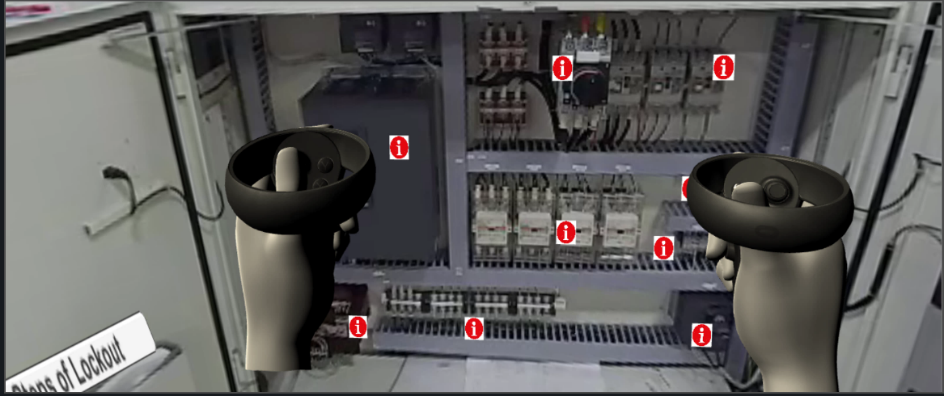Virtual Reality (VR) has shaken things up in all industries and manufacturing is no exception. VR was first popularized and used mainly by larger manufacturers in areas like additive manufacturing, but growing acceptance of the technology now allows small and medium-sized manufacturers to take advantage of it as well.
CAVS-E is working with companies to improve their operations by using VR technology in various processes and conducting research into how VR can be used as a training tool for manufacturers by combining it with other technologies. Utilizing methods, such as 360-degree videos and laser scans, CAVS-E can record a manufacturing process and turn it into a video standard operating procedure. These videos can stand alone as a tutorial series, or they can be integrated into virtual environments and experienced through a VR headset. By using VR headsets, individuals are immersed in the 360-degree video, where they feel as if they are physically present in the manufacturing facility. VR tutorials can help users to make decisions and interact with their surroundings. With the utilization of Unity3D software, interactive elements are incorporated into these VR training videos.
VR is a three-dimensional, computer-generated environment where an individual is able to explore and manipulate objects, or can perform a series of actions. It integrates computer-generated images to create a real-world experience that can guide an individual through a process and help them to avoid mistakes. Possible benefits of VR for manufacturers are seen through helping to improve worker safety, creating better products, and reducing costs. Manufacturers can use VR for workplace design and layout, equipment design, training, quality assurance and risk management, control of robotics, and product development. It can even be used to create and test prototypes that help products to meet certain specifications.
Manufacturers that implement VR can simulate the production process and assembly line configuration, identifying potentially dangerous situations. VR can capture employee movement on the production line to evaluate task feasibility and proficiency, and even reduce the injury rate of employees. Using goggles that employ cameras and depth and motion sensors, manufacturers can place images into the real working environment where workers can learn the proper parts and instructions to be used in assembling a component the correct way.
CAVS-E recently used this VR training to teach new employees on a specific process used in a manufacturing plant. The training walked the users through the steps needed to perform a task and used supporting videos that showed experienced employees performing the task correctly. Through the use of virtual hands and a laser pointer, users were also able to interact with a real-life image during the training process.
This new approach to training, especially where safety hazards are present, allows for new users to learn in a risk-free environment and to repeat the training as often as necessary and until they are comfortable with a process.
To learn more about Virtual Reality, contact Emily Wall (ewall@cavse.msstate.edu), and to learn more about the programs and services offered by CAVS-E, visit cavse.msstate.edu.


